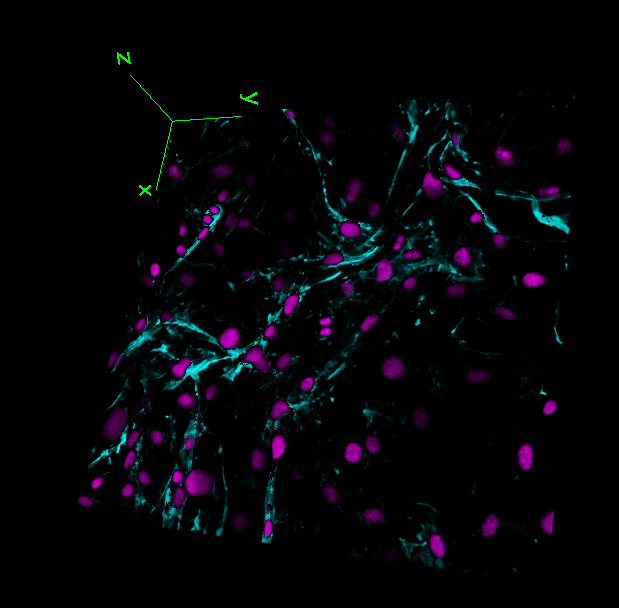
Although we use a variety of cell types to set up in vitro models, the study of hepatic metabolism in heathy and diseased states is are our main focus. Hepatocytes and liver derivates are obtained from human (ethical approval for the use of human liver tissue derivatives from the Local Health Authority), pig, rodent livers and cell lines. They are used to investigate the relationship between stiffness and hepatic metabolism. In several liver diseases (e.g. hepatitis B, C, hepatocarcinomas) there is a visible variation of the organ stiffness. It is known that matrix stiffness increases expression of tumor markers, but we do not know if hepatic metabolism is affected. We reproduced various grades of stiffness using 2D and 3D collagen constructs. Cells are analyzed using colorimetric tests (e.g. to monitor cell viability and metabolic activity), PCR (e.g. to study CYP450 expression), optical/fluorescence microscopy and confocal microscopy (e.g. morphological analysis). To obtain multi-dimensional constructs, cells are seeded on 3D constructs (e.g. decellularised tissues,soft materials) and cultured in bioreactors. Experiments are performed at the Cell culture Lab facility at the IFC-CNR.
Other cells types used are: intestinal epithelia, for the study of drug and nanoparticle passage in membrane bioreactors. In particular, Caco2, heterogeneous human epithelial colorectal adenocarcinoma cells, are analyzed using TEER measurement, colorimetric tests for cells viability, optical/fluorescence microscope to study the tight junctions and confocal microscope for morphological analysis.
In-vitro models of systemic metabolism for the study of diseases related to over nutrition are one of the main research themes. To this end a 3-way connected culture of hepatocytes, adipose tissue (for investigate its central role in nutrient metabolism) and endothelial cells (HUVEC, for the study of vascular stress in bioreators and vascularization in regenerative medicine) has been be developed. Since obesity is one of risk factors for Type 2 diabetes, current investigations are focused on models of obesity, scaled to represent normal and obese mass of adipose tissue.
Cardiac stem cells and cardomyocytes are use, both for tissue engineering and for the development of diseased heart models in the SQPR bioreactor.

Example of 3D hydrogel scaffold seeded with hMSC. Stained nuclei (DAPI, blue) and actin ((PHALLOIDIN, red) obtained with the confocal microscope of the NanoBioscopy Lab.
Affiliated Lab:
Cell culture Lab, IFC-CNR
NanoBioScopy Lab, IFC-CNR
Contact info:
Prof. Arti AHLUWALIA
Related publications:
Vinci et al., Modular bioreactor for primary human hepatocyte culture. Biotechnology Journal, 2011 6, 554-64.

